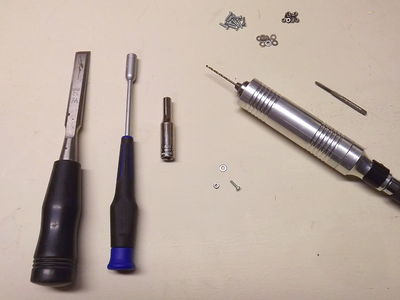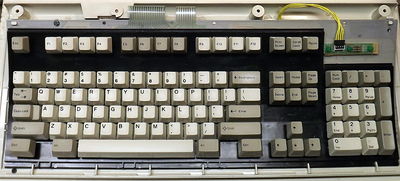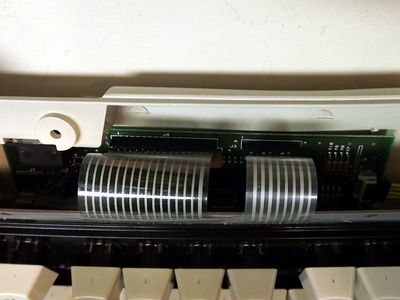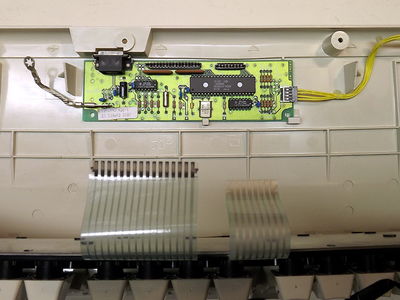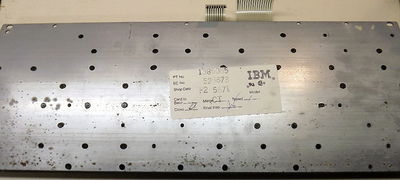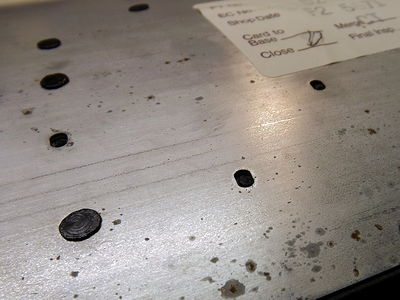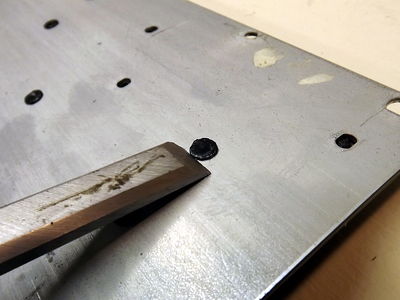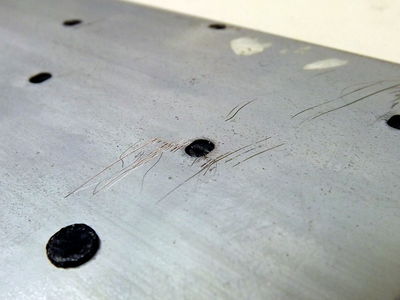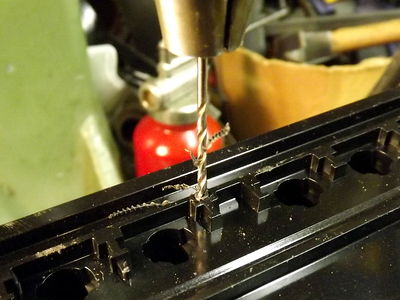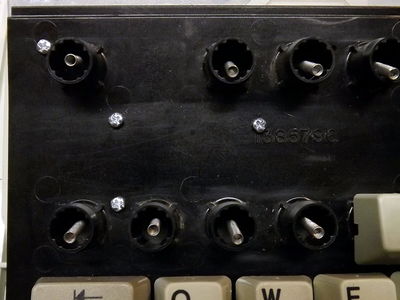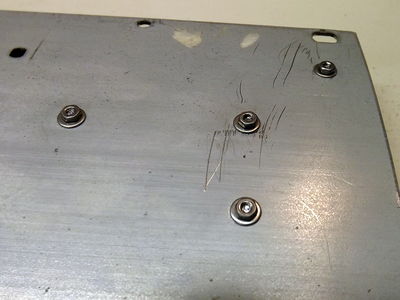Modifications:IBM Model M:Nut and Bolt Mod
This articles covers the so-called "nut and bolt mod" or "bolt mod" for the IBM Model M keyboard. It is loosely based on the procedure outlined by Sandy, which entails replacing the plastic rivets that hold the keyboard mechanism together with screws and nuts. You will need
Tools
- Flat head screw driver
- Small Philips screw driver
- 4mm socket
- 5.5mm or 7/32" nut driver
- Sharp chisel
- Drill press, hand drill, or Dremel
- 1/16" (#52 or metric 16) drill bit
- M2.0 x .40 tap (optional)
Hardware
- 87 x M2 Screw, 8mm Length, .4mm Pitch (McMaster Carr 92005A029)
- 87 x M2 Nut, .4mm Pitch (McMaster Carr 90592A004)
- 87 x M2 Washer (McMaster Carr 93475A196)
Partial Repair
If the end goal is just to replace some broken rivets, it is possible to do this without completely disassembling the board. There are some risks that, should they occur, will require full disassembly to rectify. It is important to keep the barrel support frame snug against the back plate at all times. Use a small clamp if you have to. If you let the two separate, the hammers can fall out of their rockers (especially if the key caps are still in place). Plastic shavings from drilling can also get between the membranes, causing key malfunction later. Again, keeping the assembly clamped can help avoid this.
Also note that once some rivets start to break, more usually follow.
Follow the steps below until step 7. You can use the chisel to even-out any broken rivets that are sticking up, but don't slice rivets that appear fine. Use your fingernail to check the integrity of seemingly in-tact rivets and prepare those as well. Then proceed to step 9.
Full Dissassembly
- Flip the keyboard over and remove the 4 screws along the back (SSK will only have 2).
- Flip the keyboard back around again and remove the top cover.
- Unplug the cable from the LED PCB. Later units use a flex cable here with a different connector. Obviously, older non-LED and SSK boards won't have it at all.
- Remove the ground strap between the back plate and the controller PCB. You can either try to unplug it from the spade on the PCB or unscrew it from the plate. It is better to have the strap out of the way when working on the plate, so I recommend doing that. You may need a pair of pliers to hold the nut on the other side.
- Now tilt the back of the plate assembly up slightly and carefully slip the membrane flex cables out of the sockets on the PCB. Just wiggle them back and forth and they should slide out with some effort.
- Lay the inner assembly down with the back plate facing up. If you leave the key caps on for now, be sure to lay it on something soft. If you remove the key caps, be extra careful about the springs that are sticking up. They can get smashed between the barrel and work surface, deforming them. One trick is to use the top of the keyboard case as a support while working on it..
- At this point, you will see any rivets that may be broken. Note that some holes in the back plate are not supposed to have any rivets.
- To remove the rest of the rivets, use a sharp chisel or straight Exacto blade to slice the heads off. Setting the assembly on its back edge so that you can give the chisel a solid tap is helpful for stubborn ones.
- Once the rivets are removed, the next step is to drill holes in the barrel support frame where each rivets used to be. One way to do this is to drill through the holes in the plate with the membranes and rubber mat removed. Another way is to mount the frame in a drill press. This works best on new frames, since they are already flat and it ensures that the holes are perpendicular to the frame. The extra flexing of drilling a used frame on a press may promote cracking.
- Drive the M2 screws through the holes from the top of the barrel support frame, skipping the row at the bottom. You can tap the holes first if you wish, but the extra friction of self-tapping the screws holds them nicely in place.
- Check the alignment of the screws to the back plate by test fitting the frame to the plate. If it looks good, begin reassembly.
